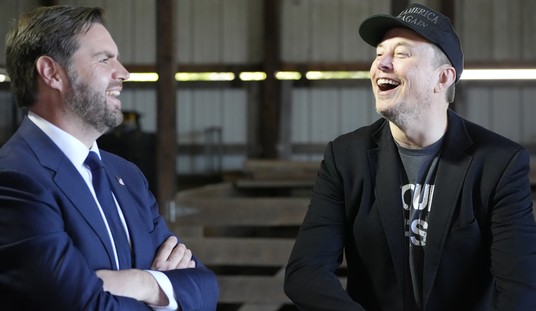I get that monetary policy is not really the sexiest or most interesting topic out there, especially in the midst of the Obama administration’s current scandalpalooza. But the signs are mounting that the Fed’s current course of action ought to start causing alarm for even the most casual consumer of news; and what’s worse, the Fed appears to have no exit strategy at all from the current morass. Via today’s Transom, Diana Furchtgott-Roth notes that Ben Bernanke continues to have no idea how long the Fed will travel its current, unprecedented policy path:
In testimony last week before the Joint Economic Committee, Fed Chairman Ben Bernanke once again defended his agency’s record. He said that the Federal Open Market Committee recognized the disadvantages of low interest rates, and sought “economic conditions consistent with sustainably higher interest rates.”
“A premature tightening of monetary policy could lead interest rates to rise temporarily but would also carry a substantial risk of slowing or ending the economic recovery and causing inflation to fall further.”
Four years after the beginning of the recovery, Bernanke reports that the Fed is unable to allow interest rates to rise closer to historical levels. Might it be possible that the Fed’s cure is worsening economy’s disease?
After all, no country ever devalued its way to prosperity. If that were possible, then all countries would have to do to become rich would be to let their currencies depreciate. But this doesn’t happen. Rather, weak currencies drive up prices of commodities and discourage saving and investment.
The Fed spends $85 billion a month purchasing Treasury bonds and mortgage-backed securities. Its record-low interest rates, caused by quantitative easing and purchases of bonds, encourage investors to take risks to get higher yields.
There are actually two distinct issues at play here. The first is the deliberate and artificial depression of interest rates by the Fed as a purported means of economic stimulus. As noted in the article above, the stimulative effect of this policy is dubious at best and leads to long-term consequences that absolutely no one can predict. Equally alarming is the notion that the Federal Reserve is buying massive amounts of U.S. Treasury Debt, with apparently no end in sight. How long can the Fed continue to do this? How long does it intend to do this? These are questions to which Bernanke has repeatedly not had an answer. The scariest question of all is: What will the long-term effects be on the economy? The question is so scary precisely because anyone who purports to answer it is doing nothing more than hazarding a wild guess, since none of us have ever been here before.
It is long past the time when all of us, even those whose eyes glaze over whenever anything approaching monetary policy is discussed, start to tune in to this issue and formulate some policy on an institution that’s operating with little or no public scrutiny at this point. Failure to do so could lead to consequences that are… well, can anyone even tell us that anymore?














Join the conversation as a VIP Member